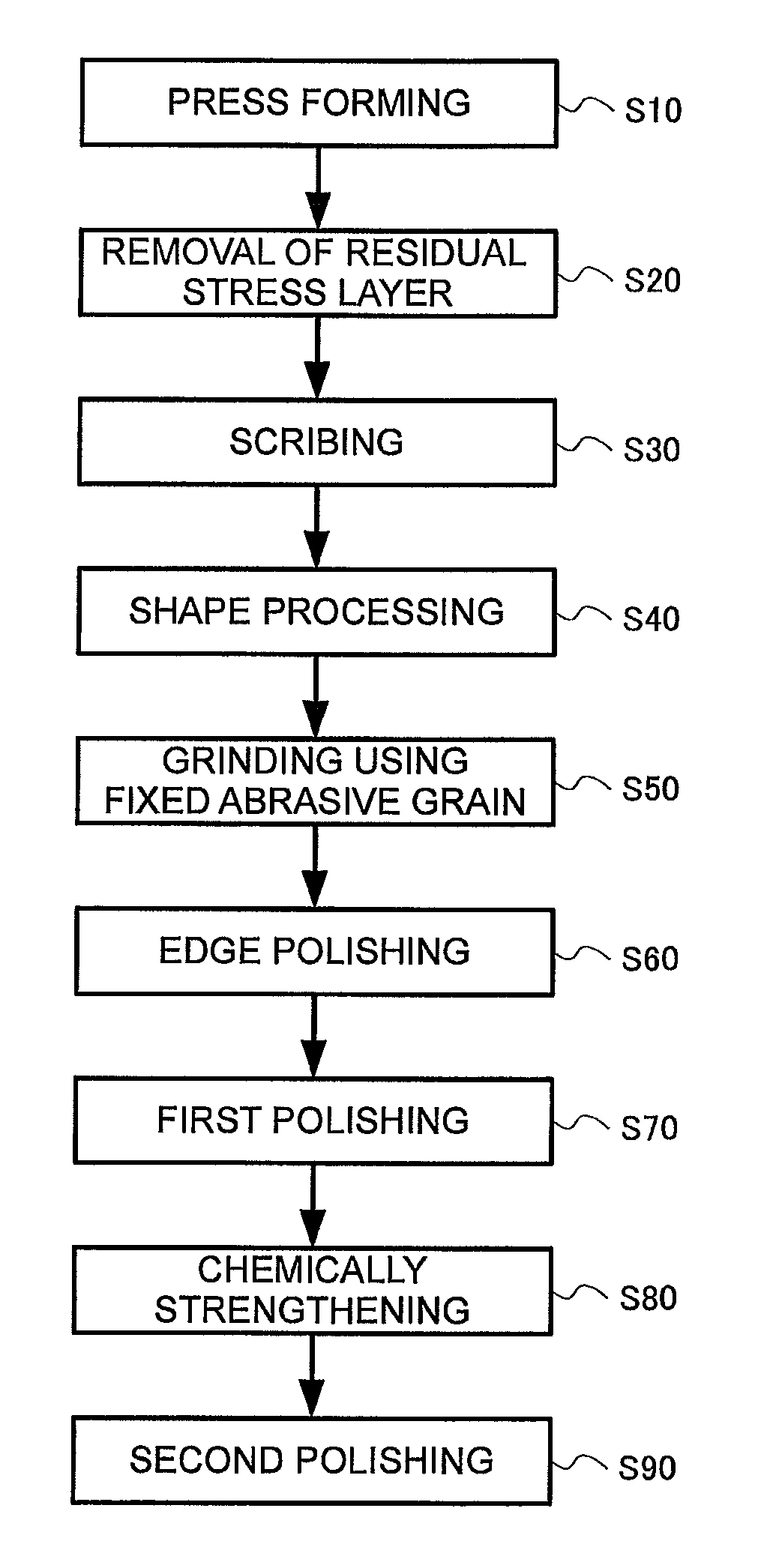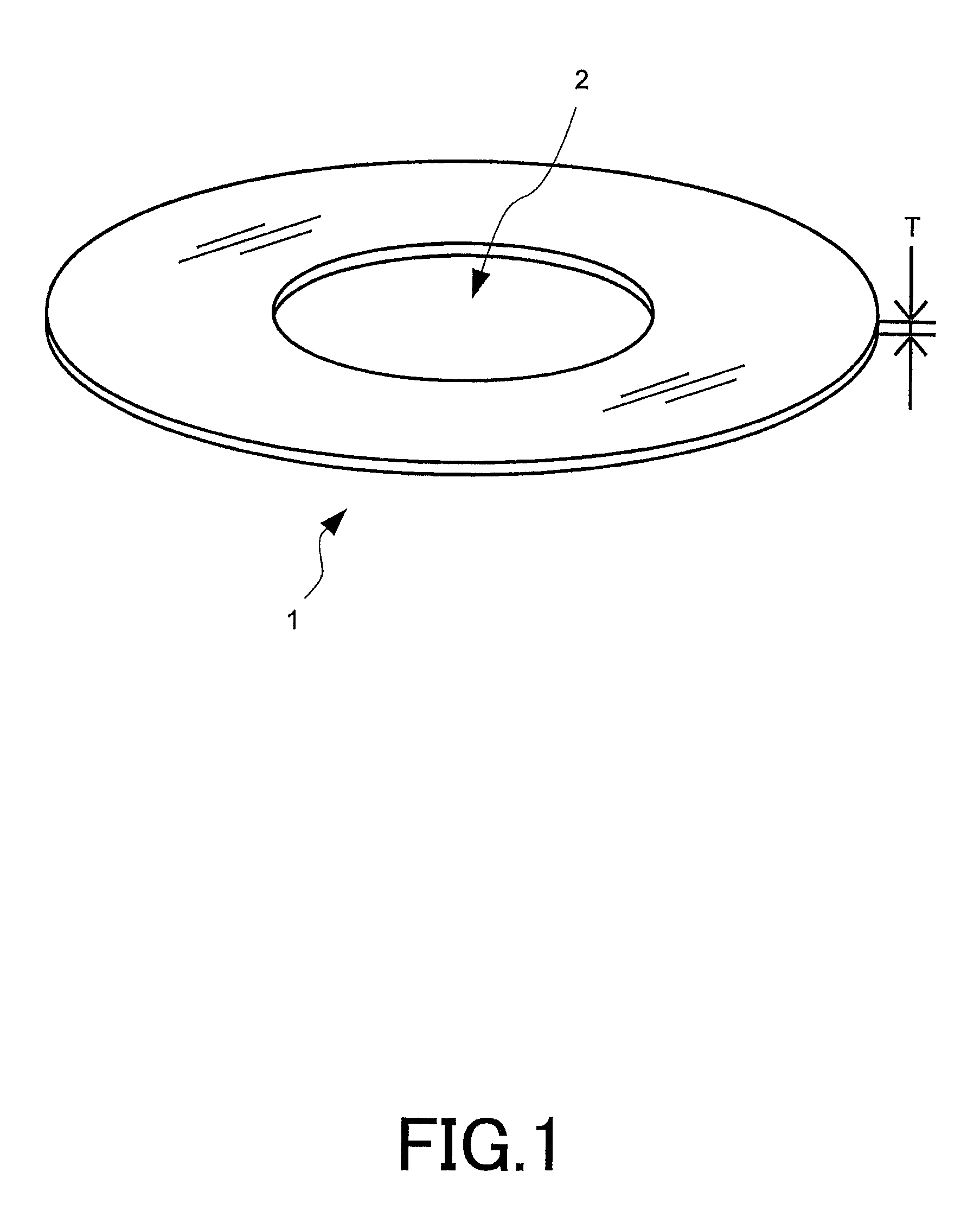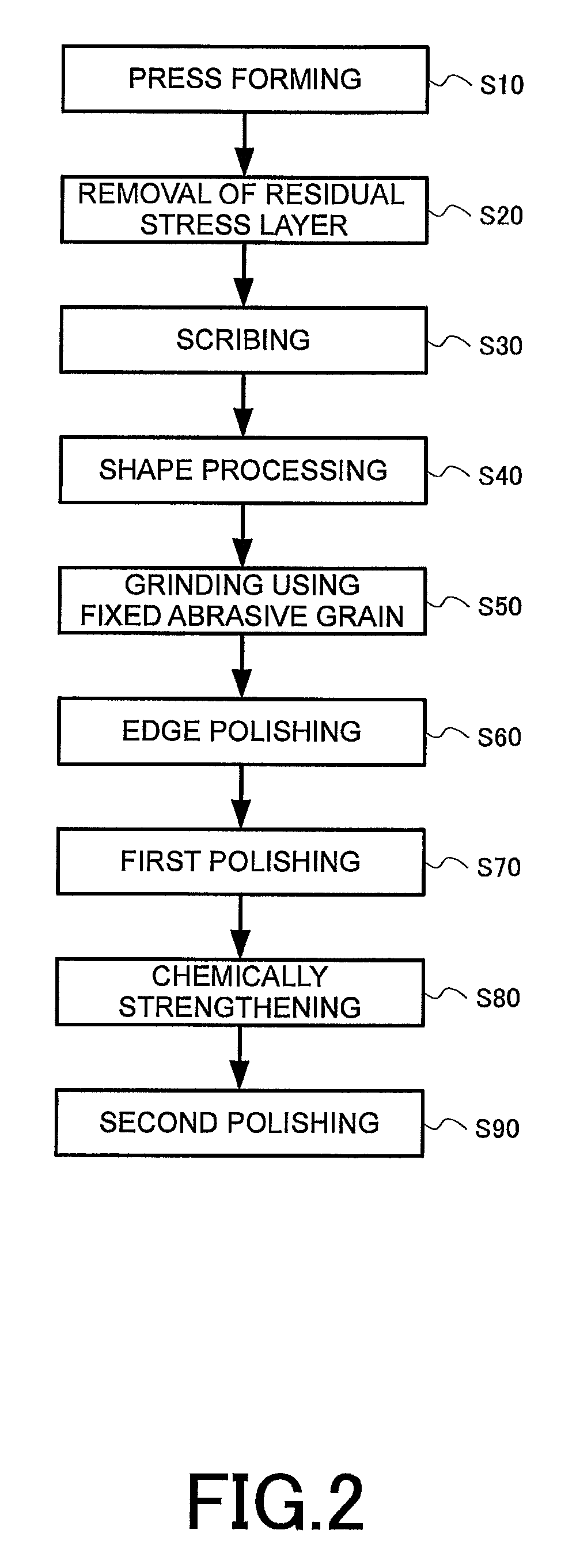Method for manufacturing glass substrate for magnetic disk
a technology of magnetic disks and glass substrates, which is applied in the manufacture of base layers, record carriers, etc., can solve the problems of poor flatness (shape accuracy), thermal asperity trouble, and read errors of glass blanks, so as to improve the flatness of glass blanks and reduce internal strain of glass blanks
- Summary
- Abstract
- Description
- Claims
- Application Information
AI Technical Summary
Benefits of technology
Problems solved by technology
Method used
Image
Examples
examples
[0155]The present invention will be further described below by way of Examples. However, the present invention is not limited to aspects described in Examples.
[0156](1) Preparation of Molten Glass
[0157]Raw materials were weighed so as to obtain a glass having the following composition, and mixed to obtain a mixed raw material. This raw material was put in a melting vessel, heated, melted, clarified and stirred to prepare a homogeneous molten glass free from foam and an unmelted substance. Foam and an unmelted substance, deposition of crystals, and contaminants such as a refractory material and platinum forming the melting vessel were not observed in the glass obtained.
[Composition of Glass]
[0158]Amorphous aluminosilicate glass having a composition including 50 to 75% of SiO2, 1 to 15% of Al2O3, 5 to 35% in total of at least one component selected from Li2O, Na2O and K2O, 0 to 20% in total of at least one component selected from MgO, CaO, SrO, BaO and ZnO and 0 to 10% in total of at ...
example 1
[0165]With regard to Example 1 illustrated in Table 1, surfaces of principal faces of a glass blank were removed by a predetermined amount, before the glass blank was scribed so as to be an annular glass substrate having an outer diameter of 65 mm, and a central hole diameter of 20 mm. The removal amounts for both surfaces in the principal faces were arranged to be the same each other. Removal amount for a single principal face was 3% of thickness of the glass blank.
example 2
[0166]With regard to Example 1 illustrated in Table 1, surfaces of principal faces of a glass blank were removed by a predetermined amount, before the glass blank was scribed so as to be an annular glass substrate having an outer diameter of 65 mm, and a central hole diameter of 20 mm. The removal amounts for both surfaces in the principal faces were arranged to be the same each other. Removal amount for a single principal face was 4% of thickness of the glass blank.
PUM
| Property | Measurement | Unit |
|---|---|---|
| viscosity | aaaaa | aaaaa |
| time | aaaaa | aaaaa |
| flatness | aaaaa | aaaaa |
Abstract
Description
Claims
Application Information
 Login to View More
Login to View More - R&D
- Intellectual Property
- Life Sciences
- Materials
- Tech Scout
- Unparalleled Data Quality
- Higher Quality Content
- 60% Fewer Hallucinations
Browse by: Latest US Patents, China's latest patents, Technical Efficacy Thesaurus, Application Domain, Technology Topic, Popular Technical Reports.
© 2025 PatSnap. All rights reserved.Legal|Privacy policy|Modern Slavery Act Transparency Statement|Sitemap|About US| Contact US: help@patsnap.com



